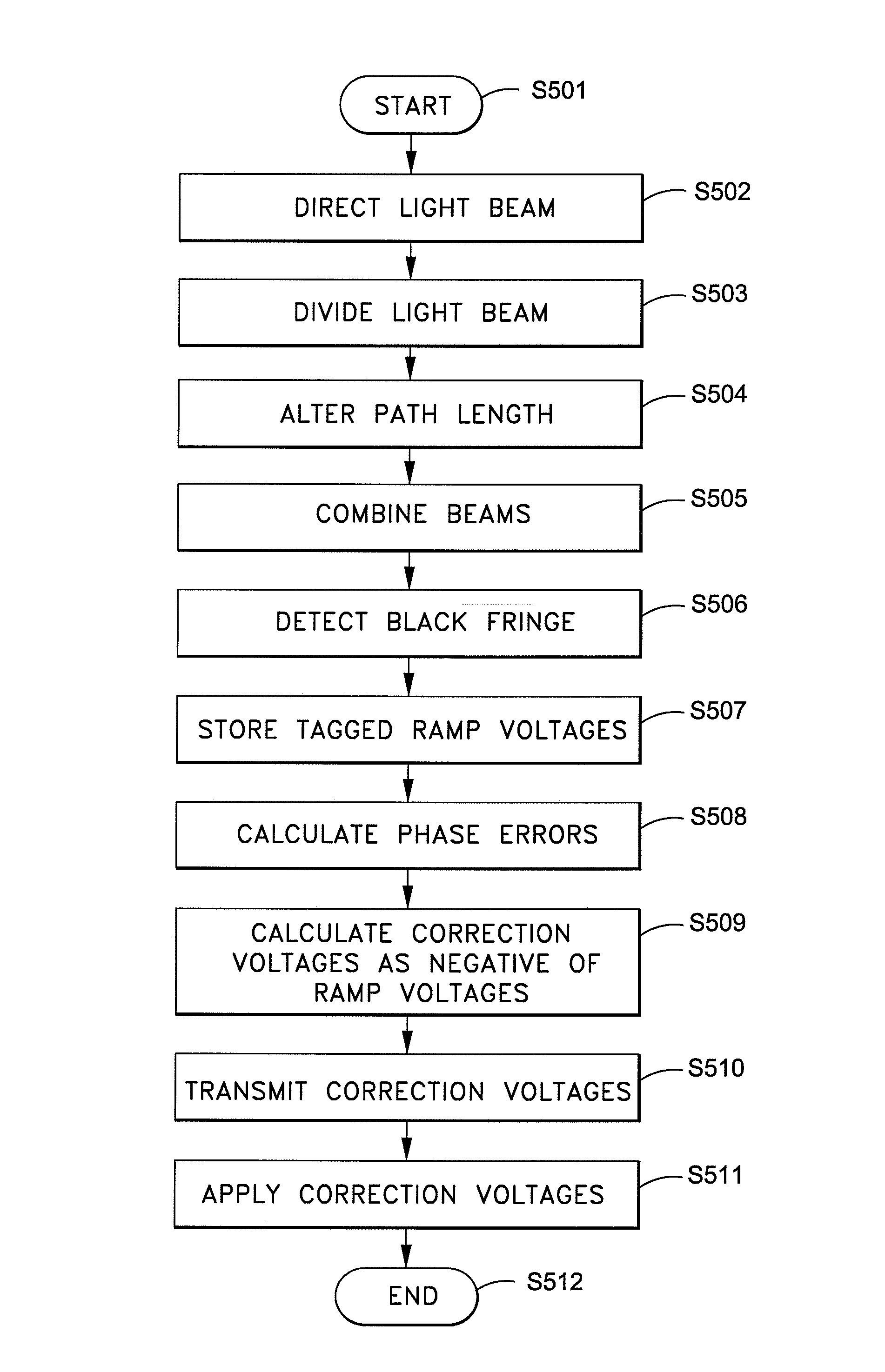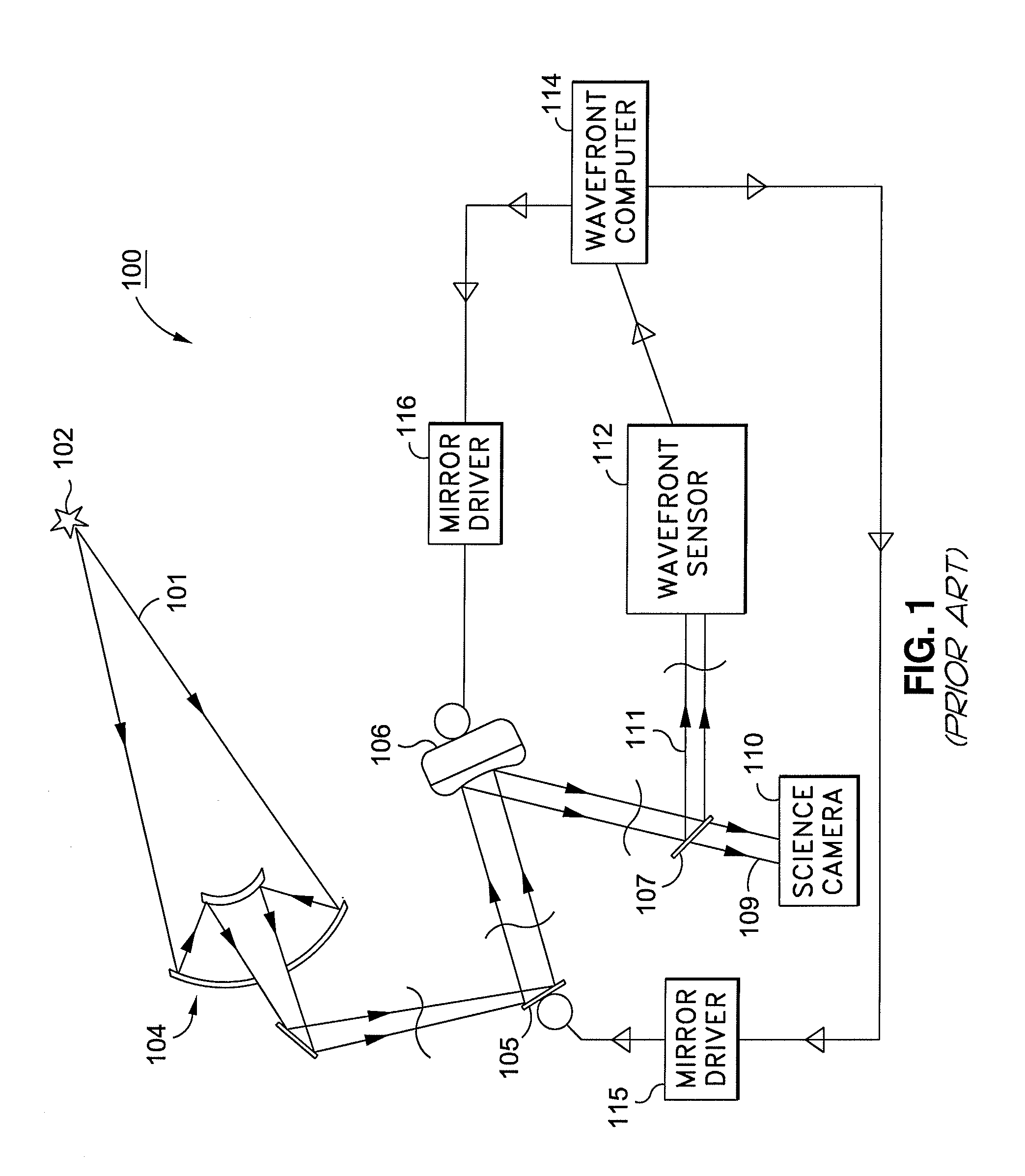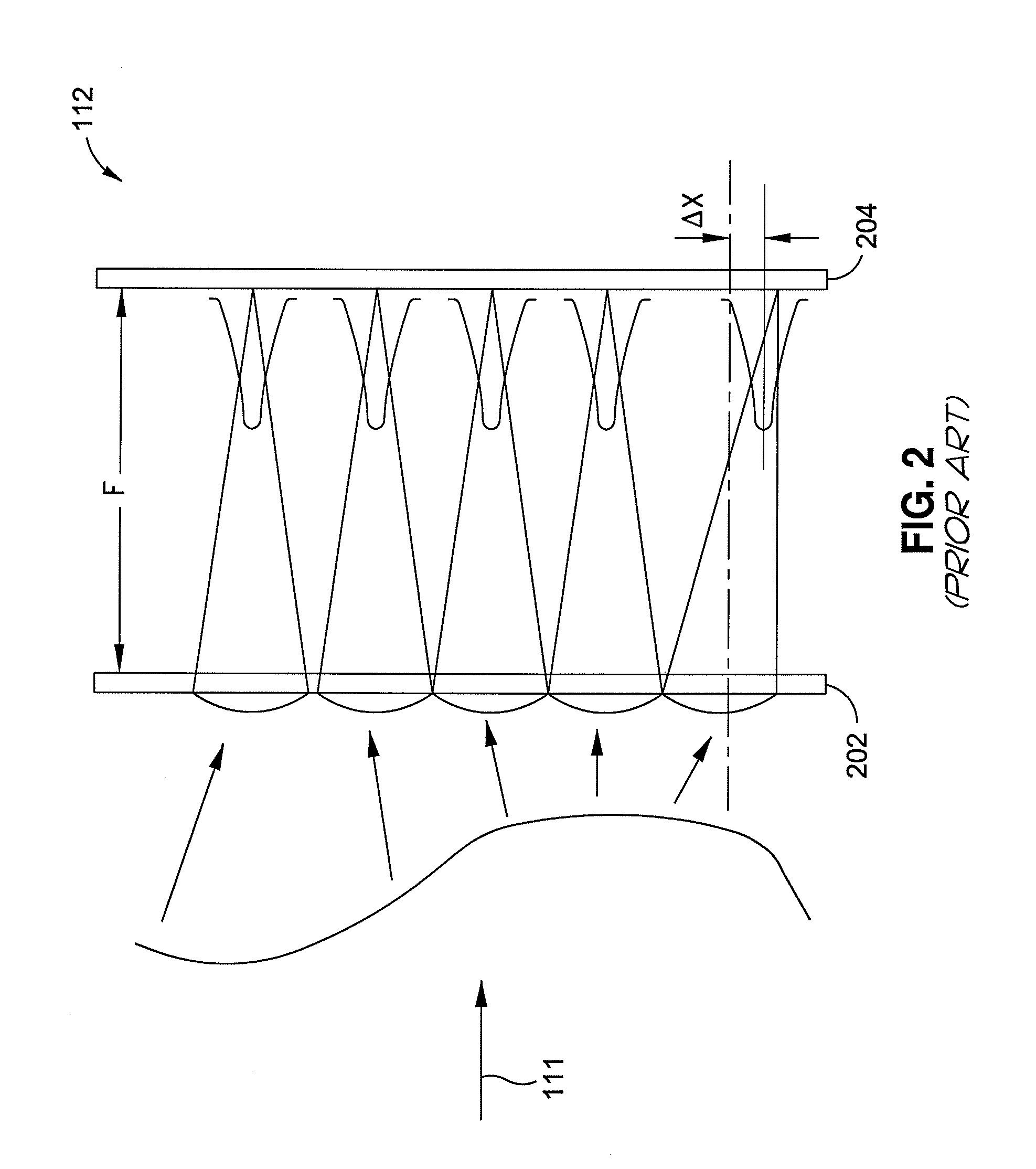Black fringe wavefront sensor
a wavefront sensor and black fringe technology, applied in the field of closed loop correction of phase aberrations using black fringe wavefront sensors, can solve the problems of mass reconstructors and sensor is not highly scalabl
- Summary
- Abstract
- Description
- Claims
- Application Information
AI Technical Summary
Benefits of technology
Problems solved by technology
Method used
Image
Examples
Embodiment Construction
[0020]The present invention provides for the closed loop correction of phase aberrations using a black fringe wavefront sensor, to avoid the use of a reconstructor.
[0021]FIG. 3 depicts a system for performing closed loop correction of phase aberrations according to one example embodiment of the present invention. Briefly, the system includes an adaptive optical device and a black fringe wavefront sensor. The black fringe wavefront sensor further includes a plurality of optical elements, the plurality of optical elements dividing an incoming light beam into a measurement beam and a reference beam, and combining the measurement beam and the reference beam into a common output beam. The plurality of optical elements includes a test mirror. The black fringe wavefront sensor further includes a modulator affixed to the test mirror, the modulator modulating based upon a ramp voltage, thereby altering optical path length of the measurement beam and location of black fringe, and a plurality ...
PUM
 Login to View More
Login to View More Abstract
Description
Claims
Application Information
 Login to View More
Login to View More - R&D
- Intellectual Property
- Life Sciences
- Materials
- Tech Scout
- Unparalleled Data Quality
- Higher Quality Content
- 60% Fewer Hallucinations
Browse by: Latest US Patents, China's latest patents, Technical Efficacy Thesaurus, Application Domain, Technology Topic, Popular Technical Reports.
© 2025 PatSnap. All rights reserved.Legal|Privacy policy|Modern Slavery Act Transparency Statement|Sitemap|About US| Contact US: help@patsnap.com



